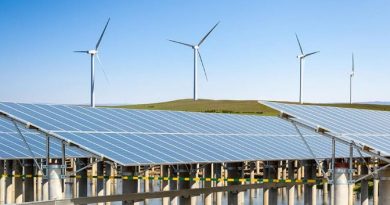A Sustainable Solution To Rising Fuel Prices

As petrol prices in India touch the three-digit figure and are in no mood to stop there, the government has advanced its plan to bring 20% ethanol mixed fuel into the market, from the earlier timeline of 2030 to 2025. It would be logical to welcome the step that would bring about self-reliance in fuel, substantial saving of foreign exchange, and significant reduction in pollution levels and growth in the rural economy.
It is said that a good deed must not be delayed. By accelerating the process of achieving 20% ethanol mixed fuel 5 years earlier than originally planned, the government has acted upon these words.
Let us go back in history to set the context. The issue of finding sustainable alternatives to conventional fuel sources was underlined when fuel prices went through the roof in the 70s. After some lull it picked up again at the Rio Earth Summit in 1992 when concrete goals were set towards environment protection. However, the problem of environmental pollution continued unbridled over years until 2015, when the issue was brought to the table at the United Nations led Paris Convention. The prime goal set during this meet was to bring down carbon emissions all over the world as early as possible and to keep the global temperature rise less than 2 degrees celsius. Country wise goals were determined. India accepted the ‘Nationally Determined Contribution’ of reducing carbon emissions by 33 to 35% and to create green cover adequate to absorb 2.5 to 3 crore tons of carbon dioxide, by the year 2030.
Transportation fuel is a large part of our total energy consumption. These fuels namely petrol and diesel come from the mineral source and are highly polluting in nature. However, in the absence of easily accessible alternatives, these fuels became the default choice for global systems over the years. The 60% increase in consumption of fossil fuels in the last three decades, as compared to the previous two decades is proof of this.
Speaking of our own country, consumption of conventional fuels has clearly impacted our economic, social and environmental health. India follows the US and China in fuel consumption. Ironically, we need to import 83% of the fuel and 46% of the natural gas we consume! The foreign exchange payout towards these imports in financial year 2019-2020 was three times our Defence outlay and 1.75 times the provision for annual interest payment on debt. From the geo-political perspective too, this scenario can prove perilous since India relies on the Gulf and West Asian countries for 65% of the imports of fuel. In light of the political instability in this region, we might face supply disruptions.
Let us understand the social and environmental hazards. Heavy use of fossil fuels has increased the levels of toxic gases like carbon dioxide, ozone, sulphate, formaldehyde and benzene in the air. These emissions can adversely affect photosynthesis which leads to a decline in agricultural yield. Pollutants cause pneumonia, asthma, throat and eye irritation, disorders of the lungs, heart and brain, and even cancer.

An Ethanol Production Plant
On this background we might take a moment to appreciate the government’s decision to expedite the introduction of 20% ethanol mixed fuel into the economy. We have moved from 1% ethanol mixed fuel in 2014 to the present 8.5% and shall reach a 10% mix next year. With revised goals, this is expected to be 20% by 2025. This announcement is highly encouraging not just to the ethanol industry but also to the rural economy and environmental scenario.
Presently, ethanol is produced from molasses which is a residue from the sugar manufacturing process. India produces 60 lac tons of surplus sugar. However, rising prices of sugar cane and storage overheads put considerable pressure on margins of sugar manufacturing units. Developing a new revenue model makes sense in this situation. Using bagasse and molasses, which are waste product and by-product respectively, of the sugar manufacturing process, is a pragmatic proposition.
According to the figures released by the Department of micro, small and medium industries, the ethanol-based economy is up to Rs. 20000 crore and the annual turnover from the rural region is about Rs. 88000 crore. The objective now is to step up these figures to 2 lac crores and 5 lac crores respectively. This entire movement will also help in bringing employment and revenue generation in rural India and preventing migration to cities.
The sugar industry by itself cannot be expected to supply the quantum of raw material needed to achieve these targets. My company Praj Industries has developed the technology to use agricultural waste to manufacture ethanol. I am happy to announce that we have been installing ethanol manufacturing plants for oil companies. However, in order to draw the private sector into it, there is a need to demystify, simplify and speed up the operations of the sector including supply chain, licenses, financial and legal aspects. Fortunately, all this is being given the required boost.
Fuel is but one form of the total energy needs of the nation. It is the central government’s aim to have 15% of the total demand for energy met by natural gas by the year 2030, since it is a much cleaner source. Presently this figure is merely 6%. Compressed bio-gas (CBG) is an even more environment friendly alternative to conventional fuel. Praj has developed the technology to produce it from biomass. The government announced the Sustainable Alternative towards Affordable Transportation (SATAT) policy in 2018. According to this, India can produce 6.2 crore tons of CBG annually. The government has fixed the ambitious target of setting up 5000 CBG manufacturing plants and an aggregate production of 1.5 crore tons of CBG by 2025!
Earlier, I mentioned about the technology to process stubble and farm waste into ethanol. According to the research on ‘Future of Bio-fuels in India’ published in December 2019 by the International Council on Clean Transportation (ICCT), 7.1 crore tons of agricultural waste can be available in India for the production of bio-fuel by the year 2030. This does not include the waste that is reused in the farm to maintain the carbon content in the soil. Similarly, about 26 lac tons of forest waste shall also be available to manufacture bio-fuel. Clearly, it is not so much the availability of raw material that is critical here, as the technology necessary to process it. We now look up to our government to create the infrastructure and eco-system to support the bio-fuel industry so that not only public sector oil companies but even the private players find it attractive enough to invest in and benefit from.
You would agree that all the alternatives of bio-fuel depend upon agricultural waste and by products. This will essentially fortify the rural economy. This is one of the worthy ways to attain India’s goals of self-reliance and sustainable development. We appreciate government’s earnest in encouraging this industry. The stakeholders including manufacturers and farmers to citizens as final consumers must now do their bit to support the initiative.




